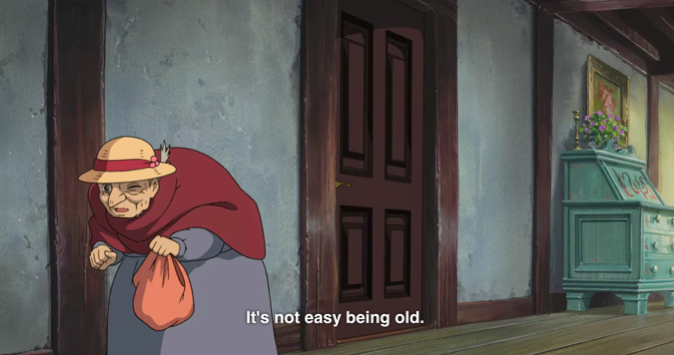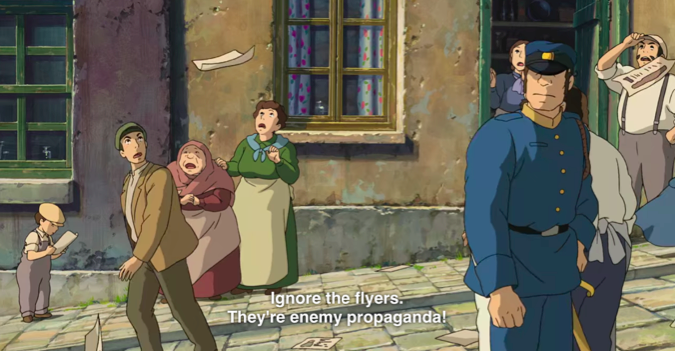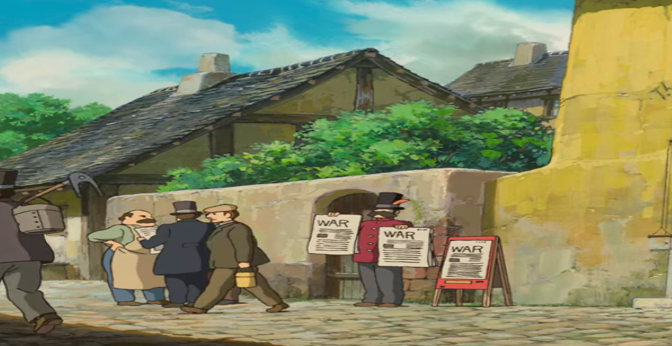Howl’s Moving Castle and Miyazaki’s Protest Against The Iraq War
On the eve of the 2003 Iraq invasion, the Japanese director Hayao Miyazaki decided to make a movie that he felt would be poorly received in the United States. The result was Studio Ghibli’s Howl’s Moving Castle (2004) in which the unmistakable bitter taste of war is depicted.
The movie tells the story of the young Sophie, who’s transformed to a ninety-year old woman by a witch’s curse. Fleeing her home to find a way to break the curse, she ends up in Howl’s moving castle.

Shaping public opinion
Movies always have had the capacity to shape and mold public debates and opinion. Ever since the start of the war on terror (2001), image making played a central role. From the constantly replaying videos of the burning World Trade Center, to summits where representatives of the entertainment industry joined American presidents to consider how they might contribute to the war on terror. Bush himself has used movies such as Kandahar (2001) to legitimate his decision to intervene in Afghanistan on the basis of seeking, among other things, to improve the condition of Afghan women. Movies such as We Were Soldiers (2002) and Tears of the Sun (2003) concentrated on developing a sense of the US soldier as an ‘ethical warrior’ who is committed to save the people from all evil. More subtle movies such as War on the Worlds (2005) and The Alamo (2004) confront in different ways the threat posed to the USA from aliens and foreign others respectively.

From its earliest years, the OSS (CIA’s precursor) seemed to have a keen interest in propaganda and the power of motion pictures. In 2004 the CIA declassified a 1943 OSS memo “The Motion Picture as a Weapon of Psychological Warfare,” that laid out the foundation on which the CIA later expanded. This OSS memo states that: “the motion picture is one of the most powerful propaganda weapons at the disposal of the United States. It can serve many diversified functions.” These functions include informing the public of facts they may be ignorant of, clarifying complicated issues, “dispelling doubt and uncertainty and allaying anxiety,” as well as “forming and controlling morals and opinions”. It is thus no coincidence that many directors who worked in Hollywood have at the same time been working for the CIA.

Selling a war through cinema
One of the clearest examples of CIA interference in Hollywood to control and form people’s morals and opinions is found in the movie ‘The Quiet American’ (1958). The movie sold a message that prepared Americans for becoming involved in the Vietnam war on the premise that doing so was based on a humanitarian stance. The movie is an adaptation of Greene’s anti-war novel (1955) in which he’s critical about the foundations of the growing American presence in Vietnam during the 1950s. In the novel, Greene warns that the American infiltration of Vietnam would eventually destroy the country. The film flips the novel on its head, turning a tale about the negative effects of foreign intervention into an advocacy of America’s intervention in Vietnam as just and moral. Mankiewicz, the screenwriter of the movie, received uncredited input from CIA officer Edward Lansdale. In a broader sense, the film achieved success in preparing the American public for what soon became one of their long and bloody wars. The ability of turning an anti-war book into a successful pro-America propaganda movie, devoid of any mention of the CIA, is proof of the power to control people’s opinions through the medium of cinema. Hence, when America became more involved in Vietnam the years that followed, there were many people who recalled seeing The Quiet American and who projected the ideas and feelings of the film onto what they were seeing in the news. The entire process of the making and screening of this film demonstrated the power of propagandizing people before an event actually took place.
While many movies made by the Hollywood establishment were intended to convince the public of military interventions, Miyazaki tried to discourage war making by exposing the violent consequences of war and US’ military presence. The reproduced realities displayed to us in movies can make us forget or misunderstand historical events and their realities. The lines between film and reality have been blurred to such an extent that people can no longer tell when they are being influenced. However, the message Miyazaki left us after watching Howl’s moving castle was clear as day: “war is bad”.
